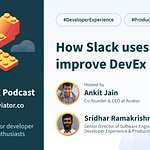About Bryan Finster:
Bryan Finster is a passionate advocate for continuous delivery with over two decades of experience building and operating mission-critical systems for very large enterprises.
Maintainer: MinimumCD.org & DojoConsortium.org
Author: 5-Minute DevOps blog
Co-author: “Modern Cybersecurity: Tales from the Near-Distant Future”
Currently works for Defense Unicorns helping to solve the hardest software supply chain problems.
Bryan on LinkedIn and personal site
References
Modern Software Engineering: Doing What Works to Build Better Software Faster
Chapters
00:00 Defining Continuous Delivery vs. Continuous Deployment
08:50 The Importance of Trunk-Based Development
10:54 Minimum CD Principles
14:47 Automation in Continuous Delivery
16:44 Building Confidence Through Testing
22:18 Understanding Continuous Delivery and DevOps
27:23 The Role of Practices in Continuous Delivery
34:07 The Impact of AI on Software Development
36:08 Rapid Fire questions
40:09 The Dojo Consortium and Its Significance
Summary
In this episode of the Hangar DX podcast, Ankit Jain interviews Bryan Finster, a seasoned expert in developer experience and continuous delivery to discuss the evolution of software engineering practices, the importance of continuous delivery, and principles behind achieving it. Bryan shares insights on the differences between continuous delivery and deployment, the significance of testing, and the role of AI in modern software development.
Keywords
developer experience, continuous delivery, continuous deployment, software engineering, DORA metrics, AI in software, minimum CD, testing strategies, DevOps, agile methodologies
Takeaways
Continuous delivery is about being always deliverable.
Immediate feedback is crucial for quality assurance.
Testing should be taken seriously to mitigate deployment fears.
Continuous delivery requires teamwork and discipline.
DORA metrics are important but not the only measure of success.
AI can enhance developer experience by providing insights.
Feature flags and canary releases are essential practices.
The pipeline should be the first deliverable in a project.
Understanding the delivery context is key to successful deployment.
The focus should be on reliability to enable rapid changes.













Share this post